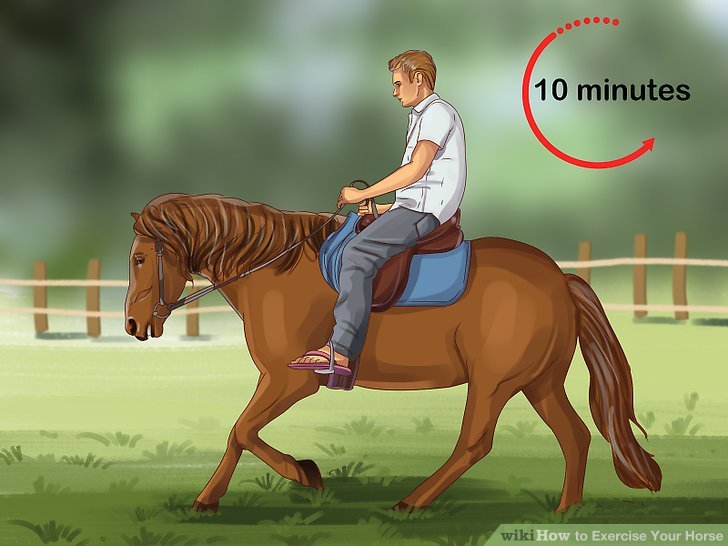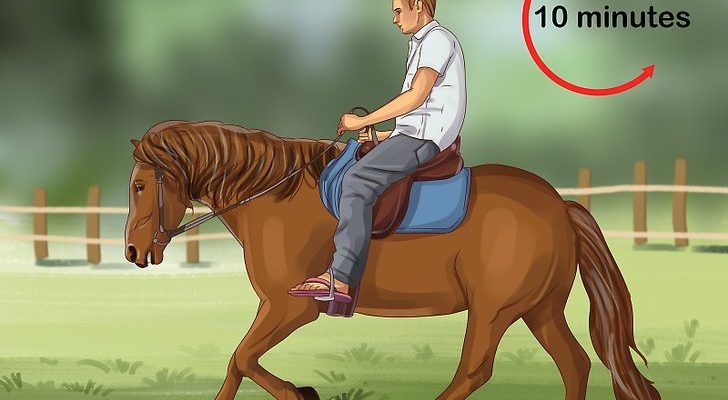
Well, let’s break it down. There’s no one-size-fits-all answer, as factors like age, breed, fitness level, and even the type of riding you do all play a role. Think of it like a workout plan for yourself; you wouldn’t follow the same routine whether you’re training for a marathon or just trying to stay in shape. Each horse is unique, and understanding their needs will help you create a personalized exercise schedule. So, grab a cup of coffee, and let’s chat about how you can keep your horse fit and fabulous!
Understanding Your Horse’s Needs
Before diving into exercise routines, it’s essential to understand what your horse needs. Horses are natural athletes, but their requirements can vary greatly depending on several factors. For starters, consider the horse’s age. Young horses, or foals, have a lot of energy, but they also need to be gradually introduced to exercise. Older horses might have different limitations, so keeping their workouts gentle is crucial.
Also, think about the horse’s breed. Some breeds, like Thoroughbreds or Arabians, may thrive on intense workouts, while others, such as draft horses, might require shorter, more relaxed sessions. And let’s not forget the individual temperament of your horse. A spunky pony might need more exercise to burn off energy, while a calm older mare could be perfectly content with a quieter routine.
Finally, consider the horse’s fitness level. If your horse is just coming back from a break, it’s essential to ease them into exercise rather than jumping straight into high-energy workouts. This way, you can prevent injuries and build their strength gradually.
Daily Exercise: The Basics
For most horses, a solid exercise routine means daily workouts. However, this doesn’t always mean intensive training every day. It’s about finding a balance. Most experts suggest that your horse should get at least 30 minutes to an hour of exercise most days of the week. This could include riding, lunging, or even some fun groundwork.
A good rule of thumb is to mix up their routine. For example, you might ride for an hour one day, then do some groundwork the next. This variety keeps your horse engaged and helps prevent boredom. If your horse is in training or you’re preparing for a show, you might need to schedule more intense sessions a few times a week—but not every day.
Also, remember that cool-downs and warm-ups are just as important as the workout itself. Spending 10–15 minutes both warming up and cooling down helps prevent injuries and keeps your horse’s muscles flexible.
Types of Exercise to Consider
Now that you know how often to exercise, what types of exercise should you include in your routine? Here are some popular options:
- Riding: This is often the most enjoyable form of exercise for both you and your horse. Whether you do dressage, jumping, or trail riding, it’s great for building muscle and endurance.
- Groundwork: Exercises like lunging or long-lining can help improve your horse’s balance and responsiveness. Plus, it’s a fantastic way to bond with your horse.
- Turnout: Allowing your horse to roam freely in a pasture is a natural and vital part of their exercise routine. This helps them stretch their legs and socialize with other horses.
- Interval Training: For more advanced fitness, consider interval training. This involves periods of intense exercise followed by rest, which can improve your horse’s stamina.
You might be wondering, how do you choose which type of exercise to focus on? It really depends on your horse’s preferences, your goals, and what you both enjoy. Mixing it up keeps both you and your horse engaged and excited about exercise!
Adjusting for Different Seasons
As seasons change, so should your horse’s exercise routine. During hot summer months, you’ll want to consider the heat when planning workouts. Early morning or late evening rides are often cooler and more comfortable for both of you. A shady area for groundwork or turnout is also a smart move.
Winter presents its own challenges, like icy ground or colder temperatures. Shorter sessions might be necessary, and you may want to include more indoor work if you have access to an arena. Horses can also lose muscle tone during cold months, so try to keep them active to maintain fitness.
All in all, you want to ensure that your horse is safe and comfortable while still getting the exercise they need, no matter the season. Adjusting their routine based on weather conditions will help keep your horse healthy and happy all year round.
Signs Your Horse Might Need More Exercise
You might wonder how to tell if your horse needs more exercise. Here are some signs to watch for:
1. Excessive energy: If your horse seems restless or is acting out, they might be bored or energetic. More exercise might help.
2. Weight gain: Like humans, horses can gain weight if they’re not active enough. If you notice your horse getting a bit chunky, it could be time to amp up their workouts.
3. Behavior changes: A horse that seems more anxious or irritable might need more stimulation through exercise.
If you notice any of these signs, it’s a good idea to reassess their exercise routine. A little more movement can go a long way in improving their mood and overall wellness.
Consulting with Professionals
Lastly, when in doubt, consulting with a trainer or veterinarian can be incredibly helpful. They can provide personalized advice based on your horse’s specific needs, health conditions, and exercise history. Having a professional guide can ensure that you’re meeting your horse’s needs effectively and safely.
If you’re planning to ramp up their workouts or switch up their routine, a trainer can help you develop a structured plan. They can also help you understand the right types of exercises tailored to your horse’s breed and fitness level.
Remember, a healthy horse leads to a happy rider. Investing in professional advice can pay off in many ways, as they can catch potential issues before they become bigger problems.
Bringing It All Together
Understanding how often and how to exercise your horse is key to their health and happiness. The basic rule is daily exercise, tailored to your horse’s unique needs. Mix it up with riding, groundwork, and turnout, while also adjusting for seasonal changes. Keep an eye on their behavior and fitness levels—these are your best indicators of whether they need more exercise. Consulting with professionals can provide valuable insights along the way.
By creating a thoughtful exercise routine, you’re ensuring your horse stays vibrant, happy, and ready for your next adventure together. Just remember, a healthy horse isn’t just about the work they put in; it’s about the bond you build while having fun. Happy riding!

